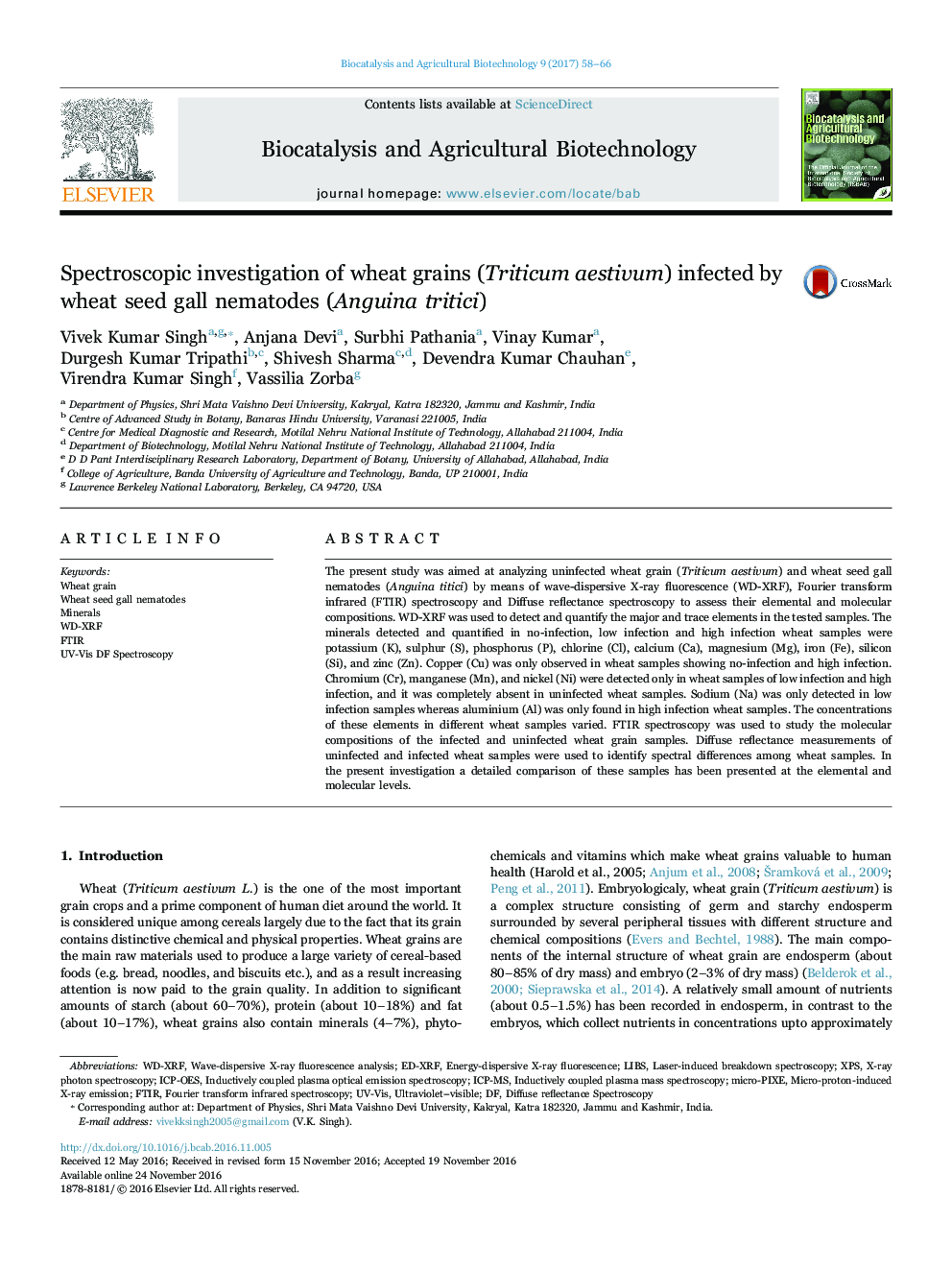| Article ID | Journal | Published Year | Pages | File Type |
|---|---|---|---|---|
| 5520582 | Biocatalysis and Agricultural Biotechnology | 2017 | 9 Pages |
The present study was aimed at analyzing uninfected wheat grain (Triticum aestivum) and wheat seed gall nematodes (Anguina titici) by means of wave-dispersive X-ray fluorescence (WD-XRF), Fourier transform infrared (FTIR) spectroscopy and Diffuse reflectance spectroscopy to assess their elemental and molecular compositions. WD-XRF was used to detect and quantify the major and trace elements in the tested samples. The minerals detected and quantified in no-infection, low infection and high infection wheat samples were potassium (K), sulphur (S), phosphorus (P), chlorine (Cl), calcium (Ca), magnesium (Mg), iron (Fe), silicon (Si), and zinc (Zn). Copper (Cu) was only observed in wheat samples showing no-infection and high infection. Chromium (Cr), manganese (Mn), and nickel (Ni) were detected only in wheat samples of low infection and high infection, and it was completely absent in uninfected wheat samples. Sodium (Na) was only detected in low infection samples whereas aluminium (Al) was only found in high infection wheat samples. The concentrations of these elements in different wheat samples varied. FTIR spectroscopy was used to study the molecular compositions of the infected and uninfected wheat grain samples. Diffuse reflectance measurements of uninfected and infected wheat samples were used to identify spectral differences among wheat samples. In the present investigation a detailed comparison of these samples has been presented at the elemental and molecular levels.
